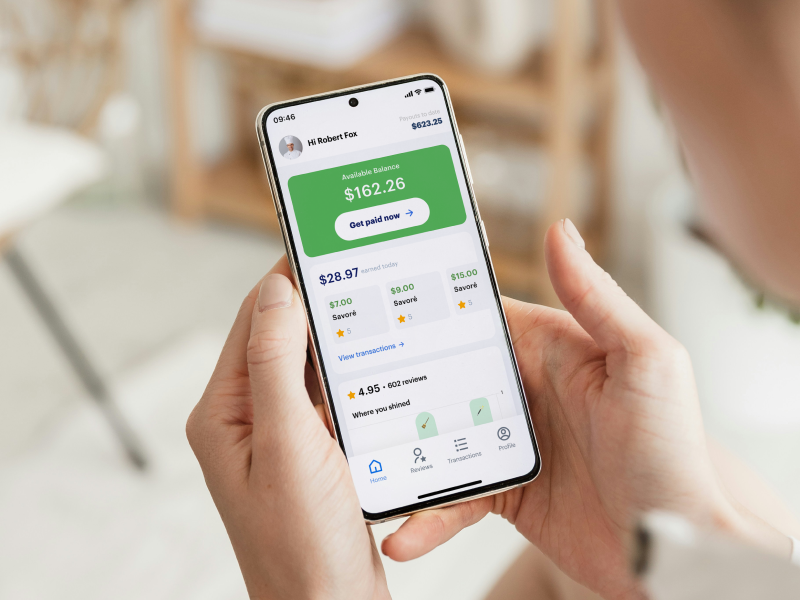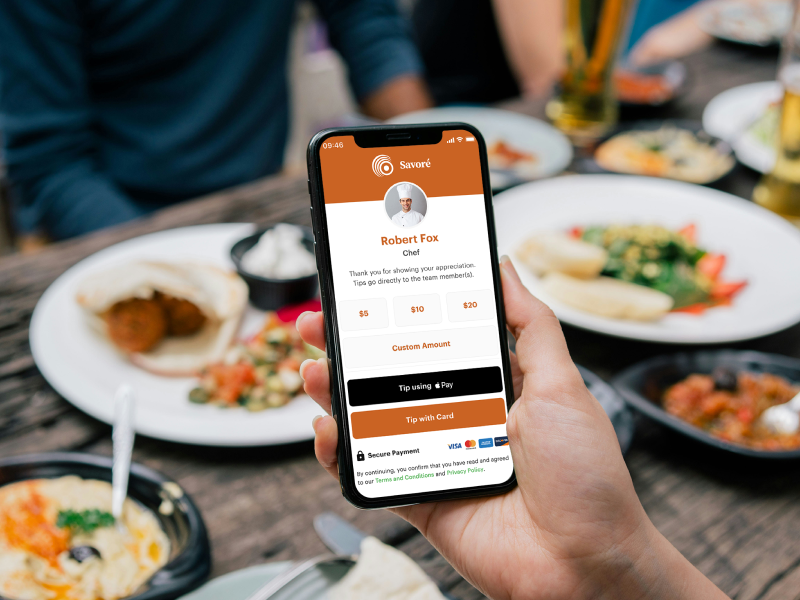Complete Guide to Restaurant Management: Tips & Tricks You Haven’t Thought Of

Running a restaurant is equal parts art and science. On any given day, you’re managing people, balancing costs, and keeping guests happy…all while trying to squeeze out a profit in one of the toughest industries around.
That’s why restaurant management matters so much. It’s the difference between a restaurant that feels chaotic and one that feels effortless. The best managers combine sharp financial awareness with people-first leadership, and they know how to use technology to simplify daily operations.
This guide brings together more than 20 restaurant management tips and tricks to help you sharpen your approach.
Key responsibilities of restaurant managers
A good restaurant manager wears a ton of hats. You’re part coach, part crisis manager, and part strategist. The role demands strong people skills, operational chops, and emotional intelligence.
Every restaurant is unique, so management roles vary a bit. But ultimately, the core responsibilities of a restaurant manager tend to include:
Staffing & team development
Recruiting, training, scheduling, and motivating staff fall squarely on a restaurant manager’s shoulders. Labor is both your largest expense and your greatest asset, so handling it effectively can make or break your restaurant. Ongoing staff training and mentorship are critical to reduce turnover and keep service standards high.
Maintaining a positive guest experience
Guest satisfaction is the ultimate scorecard. Managers have to balance speed of service, food quality, cleanliness, and the guest experience — all while resolving complaints quickly and gracefully.
Managing finances
From food cost analysis to vendor negotiations, restaurant managers keep a close eye on margins. Strong restaurant profit margin strategies ensure the business can withstand market fluctuations and remain competitive.
Compliance & safety
Restaurants face strict labor laws, IRS tip reporting, and food safety standards. Managers oversee compliance while ensuring the space is safe for both staff and guests.
Marketing & growth
Beyond day-to-day operations, managers often lead efforts in restaurant branding, loyalty programs, and promotional campaigns. And if the restaurant manager doesn’t handle marketing themselves, they’ll typically oversee the dedicated social media manager.

The 3 biggest challenges in restaurant management
Nobody said restaurant management was easy. It’s a high-stress job with a ton of varying responsibilities, each requiring distinct skills.
Here are three of the biggest challenges managers face in the restaurant industry:
1. Staff retention & turnover
Hospitality turnover rates hover around 70% annually, which is substantially higher than the national average of 10-15%.
Why is this a problem?
Because constantly recruiting and retraining new employees is a drain on your time and resources. Replacing just one hospitality worker costs roughly $6,000 on average, according to research by Cornell University.
Beyond the financial consequences, high restaurant staff turnover also deals a serious blow to employee morale. If your restaurant is short-staffed, employees end up feeling overworked, burnt-out, and potentially under-appreciated.
2. Rising costs & tight margins
Food, labor, and overhead costs are climbing across the industry — and restaurants don’t have much room to absorb those increases.
According to the National Restaurant Association, average restaurant profit margins hover between 3% and 5%. That means even small cost overruns in areas like food waste or overtime can eat into what little margin you have left.
When restaurant managers don’t have a handle on food costs or scheduling, profitability becomes a constant uphill battle. And without clear cost-management strategies in place, unexpected changes like a sudden vendor price increase or a spike in utility bills can tip your P&L into the red.
3. Changing guest expectations
Restaurantgoers today want more than good food. They expect speed, convenience, and personalized service every time they visit.
Diners are also paying closer attention to details that were once considered “extras,” like online reservations, digital payment options, and easy ways to leave feedback or tips.
If your restaurant doesn’t meet these ever-changing expectations, you risk getting left behind. The challenge for managers is keeping up with rising expectations while dealing with staffing shortages and tight budgets.

Do’s and don’ts of restaurant management
Managing a restaurant is basically a juggling act: you’re balancing staff, guests, and operations all at once. Certain habits keep things moving seamlessly, while others slowly chip away at your margins and morale.
These do’s and don’ts highlight proven restaurant manager advice that’ll save you time and protect your profits:
Do: Invest in consistent staff training
Training shouldn’t stop once an employee hits their one-week or even one-month mark. Ongoing training builds confidence, consistency, and loyalty.
When employees know exactly what’s expected and feel supported in developing their skills, they deliver better service and stay longer. Cross-training staff also ensures you’re never left scrambling when someone calls out — which is a lifesaver in an industry where turnover is already sky-high.
Don’t: Treat onboarding as a one-and-done task
Managers, please don’t throw new hires straight into the deep end without proper guidance. That’s a recipe for mistakes, low morale, and fast turnover.
Research shows employees are twice as likely to quit if they don’t receive adequate onboarding support. A rushed process might save a few hours upfront but ends up costing you far more in turnover and retraining later.
Do: Track your numbers religiously
Food cost percentages, labor percentages, and guest satisfaction scores should be on your radar daily. You should know them like the back of your hand.
Knowing how your restaurant is performing at any given moment empowers you to make small adjustments before minor issues snowball into bigger problems. For example: Spotting a 2% rise in food waste early could save thousands over the course of a year.
Don’t: Rely on gut instinct alone
Intuition has its place, but running a restaurant based on vibes and “feel” alone is risky. If you’re not actually looking at what your data is telling you, you’ll overlook inefficiencies or assume your profitability is higher than it really is. A lot of restaurant managers are surprised when a closer look at reports reveals hidden expenses that are killing profit margins.
Do: Embrace technology that makes life easier
From restaurant management software to digital tipping platforms, technology helps restaurant managers cut down on busywork like payroll, inventory checks, and tip distribution.
Take the time to assess your current operations and identify areas that are slow or inefficient. Look into tech solutions designed to address those weaknesses.
That said: Technology should take work off your plate, not add to it. If you’re spending more time learning to use or troubleshooting any restaurant tech, consider moving on.

Don’t: Cling to outdated systems
Cash-only tip jars, paper schedules, and handwritten inventory sheets are not the move in the 21st century.
Just because you’ve “always done things this way” doesn’t mean it’s the best way to get something done.
Be open-minded — embrace new technologies that can genuinely help improve your restaurant operations and automate your management duties.
Do: Communicate openly with your team
Transparency fosters trust. Whether you’re adjusting schedules, changing suppliers, or implementing a new tipping process, let staff know why certain decisions are being made. When employees understand the “why,” they’re more likely to buy in and less likely to resent changes.
Don’t: Keep staff in the dark
Lackluster communication breeds rumors and mistrust. If staff feel blindsided by sudden policy changes or schedule shifts, morale takes a hit. Over time, that leads to disengagement and higher turnover.
Implement regular pre-shift meetings and adopt employee feedback sessions to keep everyone aligned and engaged.
Do: Prioritize guest feedback
Feedback (both good and bad) is one of your most valuable tools for improvement.
Actively monitoring reviews and encouraging on-the-spot feedback gives you a pulse on what’s working and what isn’t.
Once you get feedback, do your best to act fast. Addressing issues quickly not only saves face with that guest but can prevent future complaints.
Don’t: Assume silence means satisfaction
Guests don’t always speak up when something goes wrong. In fact, most simply don’t return.
Ignoring feedback channels like online reviews or failing to distribute post-visit surveys leaves blind spots that can hurt repeat business. Restaurant managers who proactively seek out feedback tend to spot patterns earlier and improve guest loyalty.

5 most important skills for restaurant managers
Running a restaurant takes more than knowing food and service. Restaurant management requires a blend of leadership, financial savvy, and people skills that keep the ship afloat.
These five skills form the foundation every successful restaurant manager needs to master:
1. Leadership under pressure
Restaurants are fast-paced, unpredictable environments. A strong leader keeps calm, inspires confidence, and makes quick, informed decisions that keep the team moving forward and focused on shared goals.
2. Financial acumen
Good restaurant managers know the numbers as well as the menu.
You need to know how to read and interpret P&L statements, labor costs, and vendor contracts. Not only is it vital to keep operations chugging along smoothly, but also to spot issues before they spiral.
For example, a little extra overtime or controllable food waste can chip away at your profits. Managers who catch those patterns early are the ones who keep their margins steady.
3. Communication
Good communication is the backbone of every successful restaurant shift. Clear instructions prevent confusion. Consistent feedback keeps staff aligned. And an open-door policy helps small problems get solved before they turn into big ones.
Whether it’s rallying the team before service or calming a frustrated guest, managers who communicate well set the tone for the entire restaurant.
4. Adaptability
In restaurants, the only constant is change. One day it’s a supply shortage, the next it’s a surprise inspection.
The best restaurant managers take these curveballs in stride, adjusting workflows and leaning on tools and technology to stay organized. Adaptability keeps the restaurant moving forward even when the unexpected happens.
5. Empathy & emotional intelligence
Restaurant work is physically, mentally, and emotionally demanding. Managers who recognize that and show genuine empathy create a stronger bond with their team.
A little understanding goes a long way: Check in on a tired server. Acknowledge a bartender’s hard work. Step in during a rush. All of these show staff they’re valued.
That sense of support not only reduces turnover but also builds a culture where people want to stick around.
Actionable restaurant management tips
Restaurant management is a craft to be honed. Below are fresh tips to become a better restaurant manager.
And we’re not talking generic advice, like “pay competitive wages” or “be a good leader.” These are insightful bits of advice you can actually act on and implement today.
Invest in a digital tipping platform
Tipping is one of the biggest levers a restaurant manager can pull to improve employee satisfaction and retention — yet too many businesses still rely on outdated cash-based systems that frustrate staff and eat up managers’ time.

A digital tipping platform changes that dynamic in two important ways:
1. Bigger, more frequent tips = happier, longer-tenured staff
To restaurant staff, tips are everything. In September 2024, tips comprised more than 57% of tipped restaurant workers’ income.
When guests can leave a cashless tip with their phone in less than 10 seconds, the barrier of “I don’t have cash” disappears. That convenience translates into more frequent tips, larger tips, and therefore steadier income for employees.
Restaurants using eTip, the leading digital tipping platform, report a 5x increase in tip frequency and up to a $5 per hour boost in staff income.
This matters because consistent, reliable tips directly impact morale and retention. In fact, eTip customers see a 30% improvement in staff retention once employees have access to faster, more transparent tip payouts.
2. Time savings for managers
For managers, digital tipping software takes the hassle out of tip management.
Think about how much time you spend tracking tips manually in spreadsheets, cashing-out every night, and navigating complicated tip pooling rules. Those are valuable hours that could be spent on coaching staff or improving the guest experience.
Digital tipping platforms automate tip pooling, distribution, and even tip reporting. Managers can set rules — by individual, team, or shift — and let the system handle the math. And with direct-to-employee payouts and payroll integrations, there’s no need to play banker at the end of each shift.
Take control of food costs
The rule of thumb in the industry is that food costs should account for 28 – 35% of your restaurant’s expenses. But without a system in place to track and manage food costs, you’re going to see your profitability quickly plummet.
Here are some tips to tighten food costs without cutting quality:
- Use seasonal ingredients
Seasonal produce is not only fresher but often cheaper due to local availability. Swapping in seasonal items can reduce costs and give your menu a competitive edge. - Develop relationships with a few reliable suppliers
Strong vendor relationships mean better pricing, more flexible terms, and consistent quality. Diversifying vendors too widely often drives costs up rather than down. - Reduce food waste
The USDA estimates restaurants waste between 4-10% of the food they purchase. Tracking what’s thrown out and adjusting portioning or ordering accordingly can save thousands annually. - Assess portion sizes
Oversized portions create unnecessary waste and shrink profits. Regularly review plate returns to see if your portions are larger than they need to be.
Update your menu
Menu design is more than aesthetics — it’s a science. And you can use your menu to directly impact sales and profitability. The placement, descriptions, and visual cues on your menu can subtly guide guests toward higher-margin items.
- Leverage the “Golden Triangle”
Eye-tracking studies show that diners focus most on the top right, center, and top left areas of a menu — called the golden triangle. Positioning high-margin dishes here increases the chance they’ll be ordered. - Optimize for cross-selling
Pair popular entrees with profitable add-ons like sides, wine, or cocktails. Suggestive selling (both on the menu and from staff) increases check averages without feeling pushy. - Track sales for each dish
Menu engineering shouldn’t be guesswork. By tracking performance, you’ll identify which dishes are “stars” (popular and profitable), “plowhorses” (popular but low-profit), “puzzles” (profitable but under-ordered), and “dogs” (low-profit, low-demand). This framework helps you decide what to promote, adjust, or cut. - Highlight profitable dishes
Use subtle tactics like boxing, icons, or bolding to draw attention to items with the best margins. Guests are more likely to order what visually stands out.
Optimize labor costs
Labor is the single largest controllable expense in most restaurants, typically representing 30-35% of expenses.
That means even small inefficiencies — a little too much overtime, shifts staffed too heavily during slow hours, or last-minute schedule changes — can quickly shrink your margins.
But trimming labor blindly can backfire, leading to slow service and unhappy guests. The smarter approach is precision: tracking costs daily or weekly (not monthly) and using technology to forecast demand.
AI scheduling tools and restaurant management software are great solutions to manage staffing with far more accuracy, so you’re cutting waste, not cutting corners. Even small improvements, like a 1-2% reduction in labor costs, can add tens of thousands to annual profits while maintaining excellent service.
Improve shift schedules
How you schedule employees’ shifts affects how they feel coming into work — and how guests feel walking out.
Studies show unpredictable scheduling is a leading reason restaurant employees quit. Posting schedules at the last minute, piling hours on a few team members, or failing to account for personal needs leaves staff burnt out and disengaged.
Smart scheduling blends data and empathy.
We recommend:
- Forecasting sales to align labor with demand
- Using flexible scheduling tools to make it easier for staff to swap shifts and maintain balance in their personal lives.
- Posting schedules at least two weeks in advance
- Ask for staff input on the schedule
Boost staff retention rates
Turnover is one of the biggest hidden costs in hospitality. But employee retention doesn’t just help you save money on recruiting and training new staff members. It also helps ensure your service is A+.
Think about it: Well-trained, long-term employees know how your restaurant operates, and they’ve built up the skill to do their jobs well. They also know your menu and are better equipped than newbies to deliver excellent service.
Here are proven ways to keep staff engaged and loyal:
- Provide stability
Offer predictable schedules and reliable access to earnings. Digital tipping platforms like eTip give employees more transparency into their tipped income and faster tip-outs, which have been shown to boost retention rates by up to 30%. - Create growth opportunities
Map out clear career paths so employees can see a future with your restaurant, not just a short-term job. - Recognize contributions
Consistent recognition — both formal and informal — reinforces that staff are valued and appreciated. - Build a supportive culture
Create an environment where employees are respected and heard, where they feel like part of a team, not just a headcount.

Implement new revenue-maximizing strategies
Revenue growth doesn’t always require new customers. Quite often, it comes from maximizing what you already have.
For example, loyalty programs can increase repeat visits by up to 35%. Similarly, upselling strategies like pairing high-margin drinks with popular entrees can raise check averages without feeling pushy.
Consider experimenting with:
- Delivery partnerships or ghost kitchens to reach new audiences.
- Restaurant marketing ideas like limited-time specials or local collaborations.
- Digital-first restaurant loyalty programs to keep guests coming back.
The key is tracking results. Use restaurant analytics to see which initiatives actually move the needle and double down on those.
Restaurant marketing tips
- Develop a clear brand identity
Guests should instantly recognize what makes your restaurant unique, from your logo to the tone of your social media posts. Strong restaurant branding builds trust and sets you apart. - Invest in digital marketing
Ads on Google, Instagram, and Facebook are some of the most cost-effective ways to reach nearby diners. A well-targeted digital marketing campaign can help fill tables during slower hours. - Stay active on social media
Share behind-the-scenes stories, new dishes, and staff highlights. A consistent social media presence keeps you visible and top-of-mind with guests. - Build loyalty programs that work
A good restaurant loyalty program rewards repeat business and encourages guests to return. Digital loyalty platforms make it easy to track visits and send tailored rewards. - Use SMS marketing
With open rates above 90%, SMS marketing is one of the most effective tools to promote specials, events, or last-minute openings. - Encourage and manage reviews
Online reviews have a huge influence on where people choose to eat. Actively request reviews from happy guests and monitor feedback through restaurant reputation management tools. - Experiment with collaborations
Partner with local breweries, farms, or community organizations for events that expand your reach and attract new audiences.
Restaurant staff management and training tips
- Standardize onboarding
New hires should receive the same baseline training, whether they’re a line cook or a server. Consistent restaurant staff training builds confidence and helps your operations run smoothly. - Pair new hires with mentors
A buddy system shortens the learning curve and helps new employees feel supported from day one. - Cross-train your team
Staff who can step into multiple roles give you more flexibility when schedules change or demand spikes. Cross-training also keeps employees engaged by broadening their skills. - Use checklists and SOPs
Clear standard operating procedures (SOPs) reduce errors and improve consistency. Front-of-house and back-of-house teams both benefit from having a reliable playbook. - Give staff ownership
Involve employees in small decisions, like menu specials or event planning. Empowered staff are more engaged and more invested in your restaurant’s success. - Recognize achievements regularly
Simple gestures like a shout-out in a pre-shift meeting or a small reward for going above and beyond make staff feel valued. - Foster open communication
Create channels for feedback, like suggestion boxes, one-on-one check-ins, or team meetings. Employees who feel heard are less likely to leave. - Invest in ongoing development
Offer training in leadership, hospitality, or culinary skills. When staff see a future with your restaurant, they’re more motivated to grow with you instead of moving on.
Refine your restaurant management strategy with eTip
Great restaurant management comes down to two things: taking care of your people and delivering an experience guests want to come back for. Everything else — from cost control to marketing — feeds into those goals.
That’s where eTip helps you raise the bar.
By making tipping digital, seamless, and transparent, you give guests an easy way to show their appreciation while increasing staff’s tipped income. Managers also save hours every week on manual tip-outs, pooling, and reporting, while employees enjoy faster access to their earnings. The result is a happier team, less turnover, and a stronger bottom line.
Set up digital tipping at your restaurant — book a demo with us to learn how.
Restaurant management FAQs
Is managing a restaurant hard?
Yes, managing a restaurant is challenging, but it’s also rewarding. Restaurant managers wear a ton of hats. The pace is fast, the challenges are constant, and small details matter. But with strong systems in place — like clear training, digital tools for scheduling and tipping, and tight cost controls — the role becomes less about putting out fires and more about building a business that runs smoothly.
How do you become a restaurant manager?
Most restaurant managers work their way up from entry-level positions, gaining hands-on experience in both front-of-house and back-of-house roles. Pairing that experience with formal training — like hospitality courses, certifications, or a degree in restaurant management — can speed up the process.
Demonstrating leadership, financial understanding, and the ability to motivate a team are often the biggest stepping stones into management.
What not to do as a restaurant manager?
A few common pitfalls stand out:
- Ignoring financials and running the business on instinct alone.
- Neglecting staff development and recognition, which drives turnover.
- Overpromising to guests without setting up a team that can deliver.
- Sticking to outdated systems (like manual tip-outs or paper schedules) that are inefficient
How do you manage restaurant staff well?
The best restaurant managers balance structure with empathy. That means setting clear expectations, holding staff accountable, and providing consistent training, but also listening to concerns, recognizing hard work, and making schedules that respect people’s time.
Tools like restaurant management software and digital tipping platforms make this easier, freeing managers from repetitive tasks so they can focus on coaching and supporting their team.
Join the eTip community!
We'll send the latest content & special releases directly to your inbox.
Ready to join the community?
Receive the latest & greatest content from eTip, sent directly to your preferred inbox!

![[CTA] Image - Tip Payouts 3 - 1200 x 627](https://no-cache.hubspot.com/cta/default/6775923/interactive-190476651600.png)